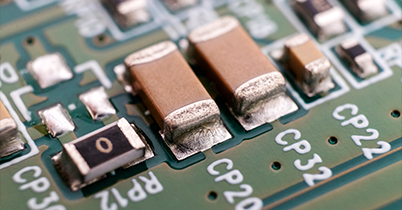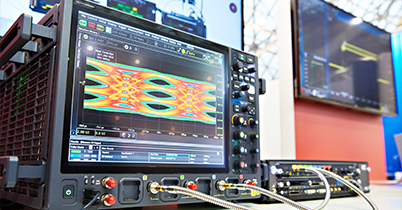Benefits of our courses
Money-back
guarantee
guarantee
If, within 30 days of placing your order, you discover that our courses do not meet your expectations, you will receive a full refund.
Experienced
instructors
instructors
Our instructors are highly experienced professionals and recognized authorities in the technical world.
Course
certificate
certificate
You will receive a course certificate upon completing coursework and finishing the course.
Practical
information
information
Our instructors share their knowledge and experience with you to make your learning process easier.
What you will learn in this course
1
Why learn signal integrity? The “Big-4” noise sources
The first video is a short course overview description of what it is and why you should take this course. In the second video we start the course with a brief overview of what the essence of signal integrity is and introduce the “big-4” noise sources that cover 90% of all signal integrity challenges. By understanding what those 4 noise sources are and how to control the amplitude of each of them you will be able to design electronics that work well – and also know why it works.
2
PCB traces as transmission lines
All PCB traces can be viewed as transmission lines, but when is that actually a good way to look at it? And what is a transmission line? In this lecture, we look at defining a transmission line model to represent the PCB trace and include only what matters to make life simpler for ourselves. A good understanding of transmission lines is the basis for many parts of this course.
3
Understand reflections and master termination
When are traces long enough to see reflections? And when should we be looking elsewhere to explain what is going on? Once we have understood reflections, we dive into the two main types of terminations that are used in high-speed electronics. Parallel and series termination – as well as the other things that are sometimes also called termination and maybe shouldn’t be.
4
History of the memory interface as an example
Memory interfaces are often the densest routing on your board. We take a look at how memory interfaces evolved as a way to look at practical management of reflections with various ways of doing termination and routing dense interfaces.
5
Differential signals, routing, and termination
Single-ended signals are not the only game in town, so here is a deeper look at what changes when we use differential signals. How is termination different? How is routing different? And why is most of what you read on the internet and in app-notes so wrong when it comes to differential signals? And what about stubs - when are traces acting like 1/4 wavelength stubs? And what to do about that?
6
Crosstalk and how to find track-to-track spacing
The next major noise source is crosstalk. Coupling between parallel traces on a PCB. How does this coupling work, and what can we do to limit the effect without wasting all the routing layers on spacing? How do you set the optimum trace-to-trace separation for a layer? And why are the outer layers so different?
7
Basic Math (Background Material)
Key formulas behind transmission lines, risetime, bandwidth, and digital signal spectra. This lesson covers the very limited math needed throughout this course series. Watch whenever you need it - maybe as the 2nd video.
Pricing Plans
Choose from three different pricing plans that meet your needs and expectations. Begin your learning journey today.
Online
$642
- Ideal for Individuals
- Online video access for 12 weeks for 1 person
- Every online access can be extended for free for 1 month
- All lessons available immediately
- PDF Certificate (after completing activities) for 1 person
- 100% money-back guarantee (up to 30 days from order)
- Unlimited video access (once downloaded)
- Video download available
RECOMMENDED
Online and Download
$1497
- Ideal for Individuals and Companies with smaller teams
- Online video access for 12 weeks for up to 3 people
- Every online access can be extended for free for 2 months
- All lessons available immediately
- PDF Certificate (after completing activities) for up to 3 people
- 100% money-back guarantee (up to 30 days from order)
- Unlimited video access (once downloaded)
- Video download available after 30 days
Quick Download
$1714
- Ideal for Professionals and Companies with more than 3 engineers
- Online video access for 12 weeks for up to 5 people
- Every online access can be extended for free for 3 months
- All lessons available immediately
- PDF Certificate (after completing activities) for up to 5 people
- 100% money-back guarantee (up to 30 days from order)
- Unlimited video access (once downloaded)
- Video download available immediately
Frequently asked questions about the course
Related Courses

FROM$642
Power and Signal Integrity Series Part 2 - Power Delivery, SSN, and Noise Margin
Optimize power delivery and bypassing. Handle Gnd/Vcc-bounce (also called SSN). Create and manage routing rule...

FROM$642
Power and Signal Integrity Series Part 3 - Advanced Materials, Manufacturing, and Techniques
Focusing on frequency dependent losses - what happens from 5Gbps and up. How to make a via. Understanding PCB ...